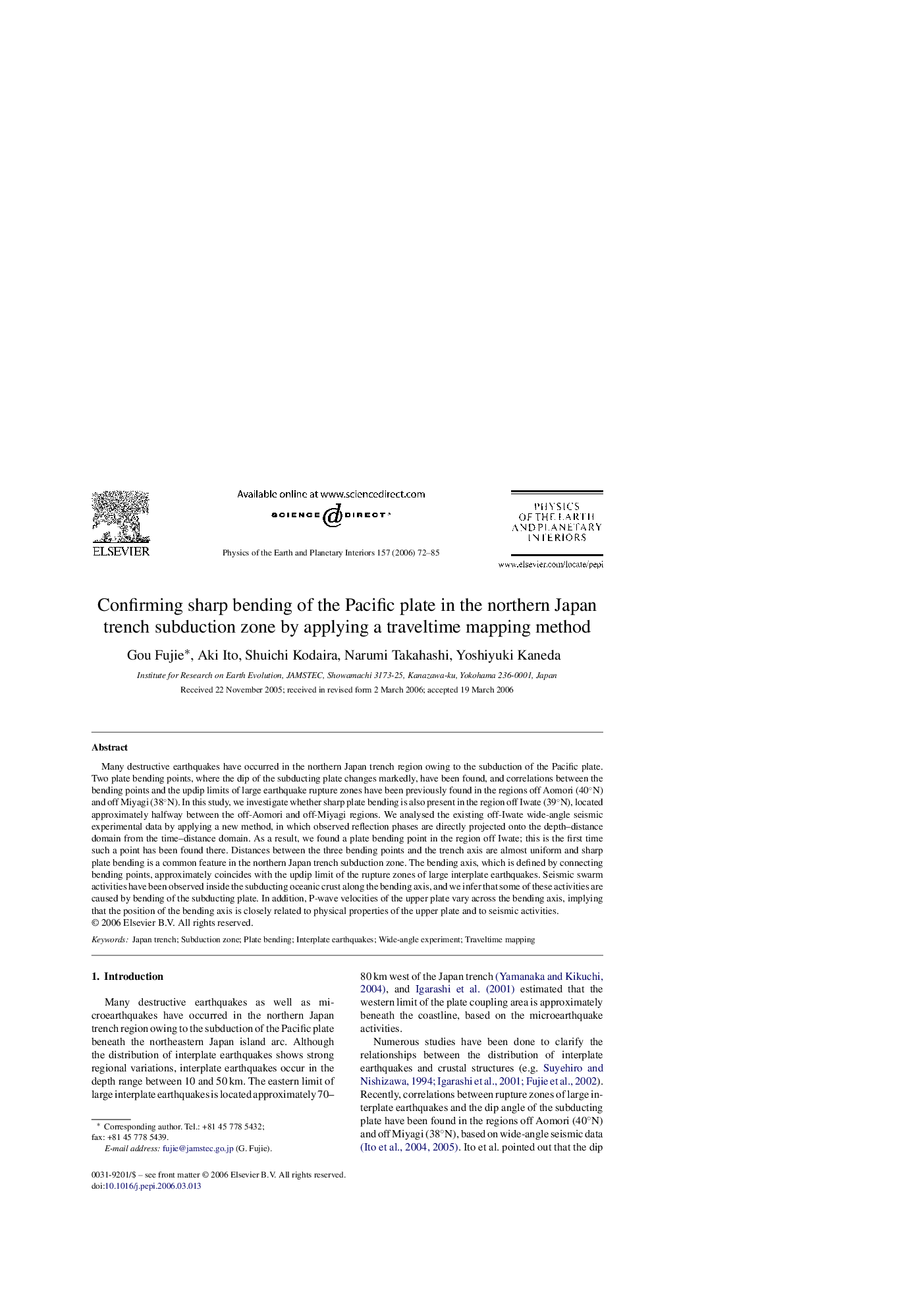| Article ID | Journal | Published Year | Pages | File Type |
|---|---|---|---|---|
| 4742672 | Physics of the Earth and Planetary Interiors | 2006 | 14 Pages |
Many destructive earthquakes have occurred in the northern Japan trench region owing to the subduction of the Pacific plate. Two plate bending points, where the dip of the subducting plate changes markedly, have been found, and correlations between the bending points and the updip limits of large earthquake rupture zones have been previously found in the regions off Aomori (40°40° N) and off Miyagi (38°38° N). In this study, we investigate whether sharp plate bending is also present in the region off Iwate (39°39° N), located approximately halfway between the off-Aomori and off-Miyagi regions. We analysed the existing off-Iwate wide-angle seismic experimental data by applying a new method, in which observed reflection phases are directly projected onto the depth–distance domain from the time–distance domain. As a result, we found a plate bending point in the region off Iwate; this is the first time such a point has been found there. Distances between the three bending points and the trench axis are almost uniform and sharp plate bending is a common feature in the northern Japan trench subduction zone. The bending axis, which is defined by connecting bending points, approximately coincides with the updip limit of the rupture zones of large interplate earthquakes. Seismic swarm activities have been observed inside the subducting oceanic crust along the bending axis, and we infer that some of these activities are caused by bending of the subducting plate. In addition, P-wave velocities of the upper plate vary across the bending axis, implying that the position of the bending axis is closely related to physical properties of the upper plate and to seismic activities.
